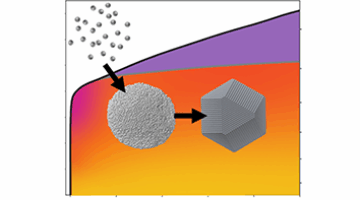 Building Materials from the Nanocrystal Up October 28, 2025 - Researchers used the Advanced Light Source to clarify how an unusual intermediate state accelerates the transformation of nanocrystals into a superlattice during a two-step process with fewer defects than a one-step process. Read more »
Building Materials from the Nanocrystal Up October 28, 2025 - Researchers used the Advanced Light Source to clarify how an unusual intermediate state accelerates the transformation of nanocrystals into a superlattice during a two-step process with fewer defects than a one-step process. Read more »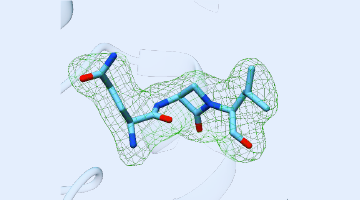 X-Rays Shed Light on Possible New Treatments for TB October 28, 2025 - Using ALS beamlines, a new study revealed how CMX410 inhibits Pks13, a cell wall enzyme in Mycobacterium tuberculosis, the bacterium responsible for tuberculosis. CMX410 is effective against drug-sensitive and drug-resistant strains of the bacterium and has been proven safe in multiple animal models of infection. Read more »
X-Rays Shed Light on Possible New Treatments for TB October 28, 2025 - Using ALS beamlines, a new study revealed how CMX410 inhibits Pks13, a cell wall enzyme in Mycobacterium tuberculosis, the bacterium responsible for tuberculosis. CMX410 is effective against drug-sensitive and drug-resistant strains of the bacterium and has been proven safe in multiple animal models of infection. Read more »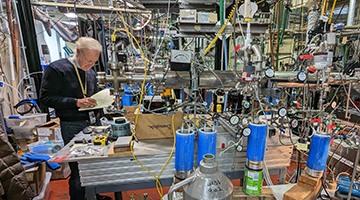 To Study Alien Atmospheres, ALS Fractures Nitrogen Gas October 27, 2025 - A research team used the ALS to recreate how the Sun breaks apart nitrogen to inform a new model that can be used to understand the fate of a variety of elemental isotopes to explain atmospheric evolution on planets across the solar system. Read more »
To Study Alien Atmospheres, ALS Fractures Nitrogen Gas October 27, 2025 - A research team used the ALS to recreate how the Sun breaks apart nitrogen to inform a new model that can be used to understand the fate of a variety of elemental isotopes to explain atmospheric evolution on planets across the solar system. Read more »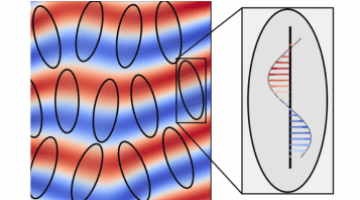 Nematic Magnetic Helices Fluctuate at Different Tempos September 17, 2025 - During a series of experiments at the ALS, researchers identified helical magnetic spins that fluctuate at different time scales during a phase transition as a function of temperature in a nematic iron germanium thin film. The results provide a framework for characterizing exotic phases, which may have interesting optical and transport properties for microelectronics and spintronics. Read more »
Nematic Magnetic Helices Fluctuate at Different Tempos September 17, 2025 - During a series of experiments at the ALS, researchers identified helical magnetic spins that fluctuate at different time scales during a phase transition as a function of temperature in a nematic iron germanium thin film. The results provide a framework for characterizing exotic phases, which may have interesting optical and transport properties for microelectronics and spintronics. Read more »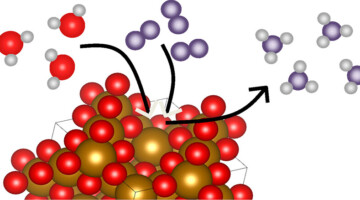 From Magnetite to Ammonia, A New Line of Production September 15, 2025 - Ammonia is a critical ingredient in many important industrial and agricultural applications. The Haber–Bosch process is the primary process for large-scale ammonia production. A new study uses an experimental–theoretical approach to uncover how interfacial chemistry at the magnetite–water interface drives ammonia synthesis under ambient temperature and pressure. Read more »
From Magnetite to Ammonia, A New Line of Production September 15, 2025 - Ammonia is a critical ingredient in many important industrial and agricultural applications. The Haber–Bosch process is the primary process for large-scale ammonia production. A new study uses an experimental–theoretical approach to uncover how interfacial chemistry at the magnetite–water interface drives ammonia synthesis under ambient temperature and pressure. Read more »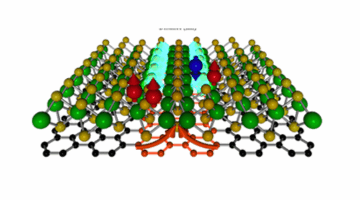 Separating an Electron into Waves of Spin and Charge September 10, 2025 - Researchers are exploring how a thin film can host a Tomonaga–Luttinger liquid, which separates an electron’s charge and spin. The research findings could contribute to the development of ultra-compact and energy-efficient technologies. Read more »
Separating an Electron into Waves of Spin and Charge September 10, 2025 - Researchers are exploring how a thin film can host a Tomonaga–Luttinger liquid, which separates an electron’s charge and spin. The research findings could contribute to the development of ultra-compact and energy-efficient technologies. Read more »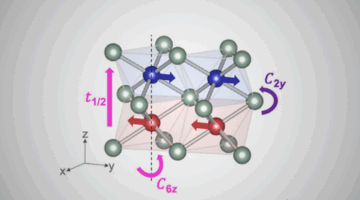 The Quest for an Altermagnet September 8, 2025 - Researchers determine the unique electronic structure of altermagnets, which offers numerous benefits in creating energy-efficient devices based on spin-polarized electron currents. Understanding how altermagnetism works could contribute to the development of next-generation memory, logic, or sensing devices that are faster and consume less power. Read more »
The Quest for an Altermagnet September 8, 2025 - Researchers determine the unique electronic structure of altermagnets, which offers numerous benefits in creating energy-efficient devices based on spin-polarized electron currents. Understanding how altermagnetism works could contribute to the development of next-generation memory, logic, or sensing devices that are faster and consume less power. Read more »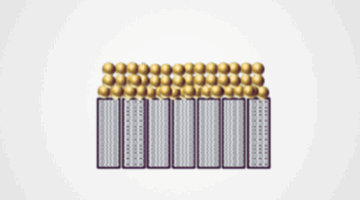 Characterizing Membrane Fouling with Operando Experiments August 26, 2025 - Membrane filtration offers a cost-effective, energy-efficient approach to purify and desalinate water, but fouling limits the performance of these devices. A new study explored the new experimental design that allows one to study the dynamic fouling process in real time to improve the field’s understanding of how materials deposit, accumulate, and/or crystallize on the membrane’s surface. Read more »
Characterizing Membrane Fouling with Operando Experiments August 26, 2025 - Membrane filtration offers a cost-effective, energy-efficient approach to purify and desalinate water, but fouling limits the performance of these devices. A new study explored the new experimental design that allows one to study the dynamic fouling process in real time to improve the field’s understanding of how materials deposit, accumulate, and/or crystallize on the membrane’s surface. Read more »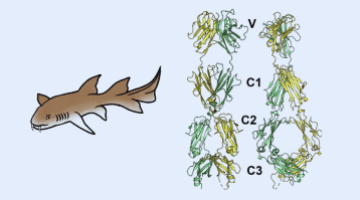 Sharks Shed Light on Origins of Adaptive Immune System August 26, 2025 - A team of researchers identified the three-dimensional structure of a protein expressed by a gene of a modern nurse shark that is proposed to be a close homologue to a gene that, more than 500 million years ago, gave rise to the adaptive immune system shared by all vertebrates. By understanding the emergence and evolution of the immune system, researchers may advance work in immunology, genetics, and biotechnology.
Sharks Shed Light on Origins of Adaptive Immune System August 26, 2025 - A team of researchers identified the three-dimensional structure of a protein expressed by a gene of a modern nurse shark that is proposed to be a close homologue to a gene that, more than 500 million years ago, gave rise to the adaptive immune system shared by all vertebrates. By understanding the emergence and evolution of the immune system, researchers may advance work in immunology, genetics, and biotechnology. Read more »
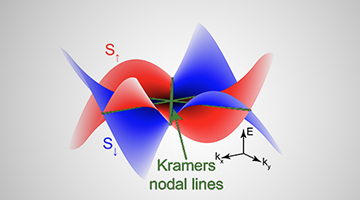 Designing Quantum Materials for Future Electronics August 21, 2025 - Researchers bring theory into practice and confirm a new material’s characteristics at the ALS. The study opens new opportunities to design a substance that renders extra “handles” on the electron—not just its charge, but its spin and valley—so we can build computers that are faster, cooler, and more energy-efficient compared to traditional electronics. Read more »
Designing Quantum Materials for Future Electronics August 21, 2025 - Researchers bring theory into practice and confirm a new material’s characteristics at the ALS. The study opens new opportunities to design a substance that renders extra “handles” on the electron—not just its charge, but its spin and valley—so we can build computers that are faster, cooler, and more energy-efficient compared to traditional electronics. Read more »